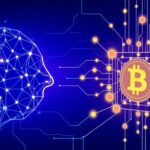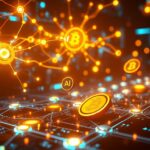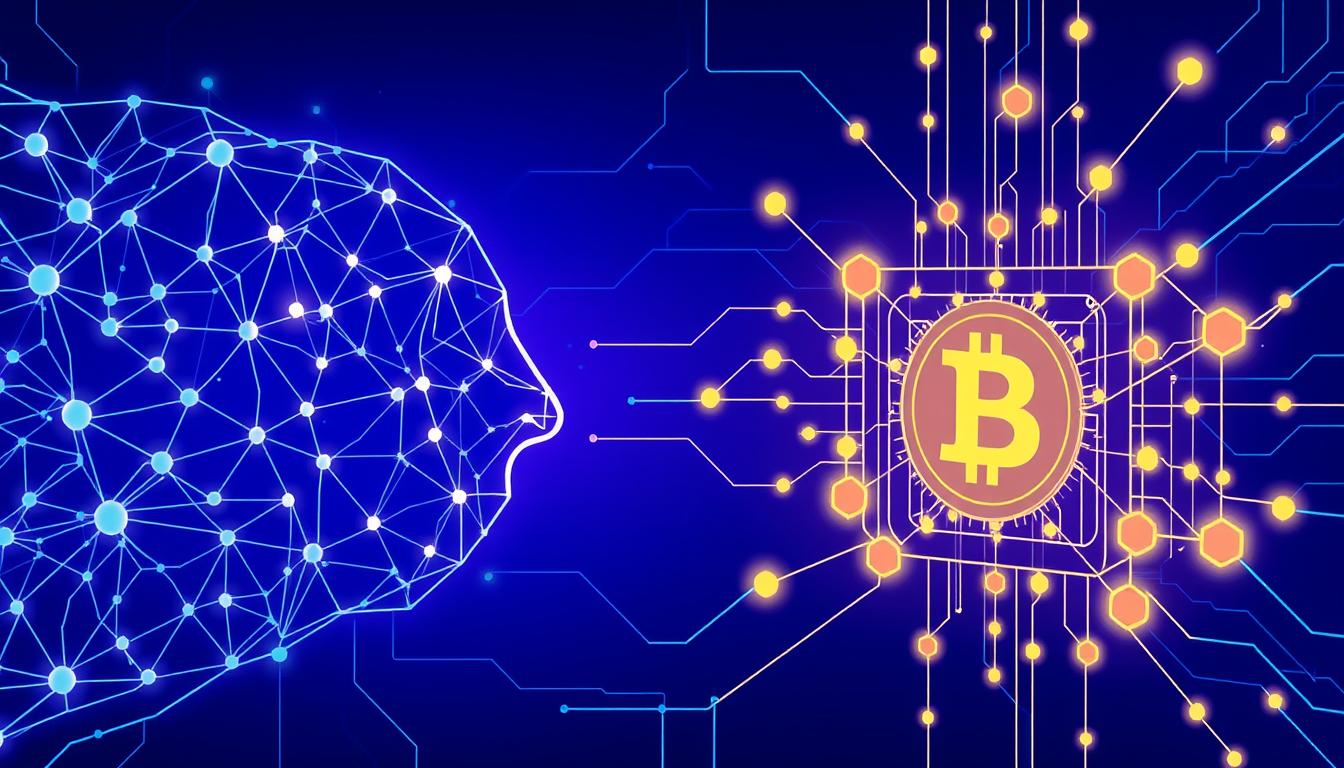Two revolutionary technologies are reshaping our digital landscape: artificial intelligence and cryptocurrency. While powerful on their own, the AI and crypto intersection creates something truly transformative. This convergence is opening new possibilities for innovation, security, and efficiency that neither technology could achieve independently. From AI-powered trading algorithms to blockchain networks that democratize access to machine learning, these technologies are no longer developing in isolation but are increasingly intertwined in ways that amplify their respective strengths.
In this comprehensive guide, we’ll explore how AI and blockchain technologies complement each other, examine real-world applications already in development, and look ahead to what the future might hold for this powerful technological partnership. Whether you’re a crypto enthusiast curious about AI applications or a machine learning expert interested in blockchain’s potential, this article will help you understand the exciting developments happening at this technological crossroads.
Understanding the Basics: AI and Blockchain Technologies
Before diving into their intersection, let’s establish a clear understanding of both technologies individually. This foundation will help us better appreciate how they complement each other.
What is Artificial Intelligence?
Artificial intelligence refers to computer systems designed to perform tasks that typically require human intelligence. These include learning from experience, recognizing patterns, understanding natural language, and making decisions. Modern AI systems, particularly those based on machine learning, improve their performance over time as they process more data.
The most visible AI applications today include large language models (LLMs) like ChatGPT, which can generate human-like text, and computer vision systems that can identify objects in images. These systems rely on neural networks—computational models inspired by the human brain—that process vast amounts of data to identify patterns and make predictions.
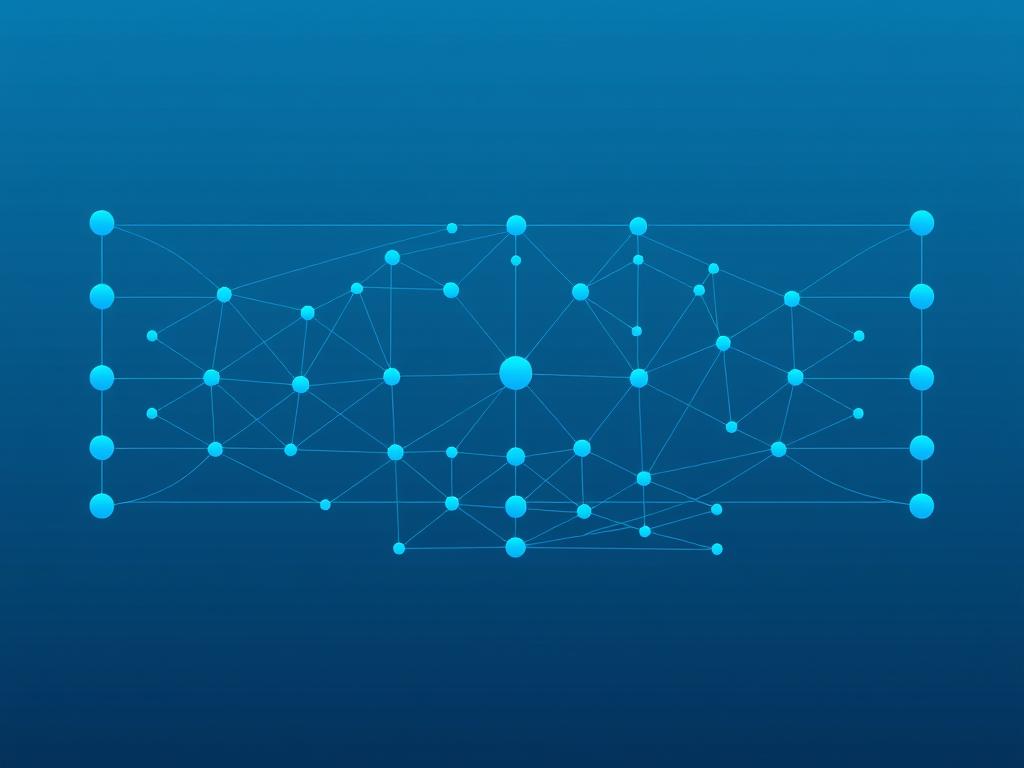
What is Blockchain Technology?
Blockchain technology provides a decentralized, transparent, and immutable ledger for recording transactions. Unlike traditional databases managed by a central authority, blockchains distribute identical copies of the ledger across multiple computers (nodes) in a network. New transactions are grouped into “blocks” and added to the “chain” only after validation through consensus mechanisms like Proof of Work or Proof of Stake.
Cryptocurrencies like Bitcoin and Ethereum are the most well-known applications of blockchain technology, but its potential extends far beyond digital currencies. Smart contracts—self-executing agreements with terms written in code—enable automated, trustless transactions and form the foundation for decentralized applications (dApps) and decentralized finance (DeFi) systems.

Key Synergies at the AI and Crypto Intersection
The convergence of AI and blockchain creates powerful synergies that address limitations in each technology while opening new possibilities. Let’s explore the most significant ways these technologies complement each other.
How Blockchain Enhances AI
Blockchain technology offers several key benefits that can enhance AI development and deployment:
How AI Enhances Blockchain
Artificial intelligence can similarly address several limitations in blockchain technology:
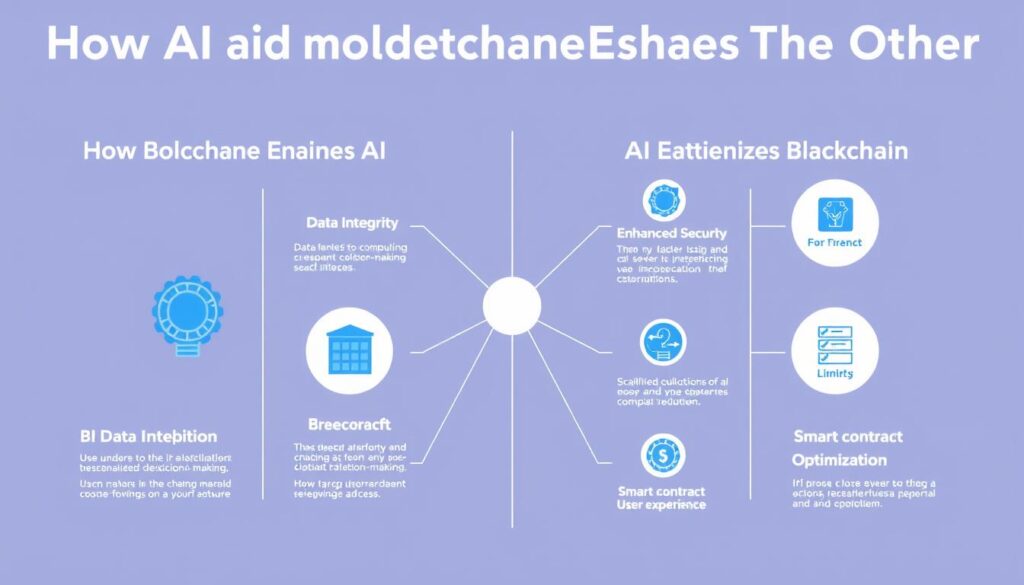
Real-World Applications at the AI and Crypto Intersection
The theoretical benefits of combining AI and blockchain are compelling, but what’s even more exciting is seeing these synergies applied in practical, real-world scenarios. Let’s explore some of the most promising applications emerging at this technological crossroads.
Decentralized AI Compute Networks
Training and running sophisticated AI models requires substantial computational resources. Several projects are using blockchain technology to create decentralized marketplaces for AI compute:
Akash Network
Akash is an open-source “supercloud” platform that creates a marketplace for unused compute resources. Users can deploy AI workloads at competitive prices compared to centralized cloud providers. The network uses a reverse auction mechanism where users submit their compute requirements and providers bid to offer services.
What makes Akash particularly valuable for AI development is its recent focus on GPU resources, which are essential for training and running machine learning models. The platform launched its GPU mainnet in 2023, enabling users to lease GPUs for AI training and inferences at potentially lower costs than traditional providers.
Bittensor
Bittensor takes a different approach by creating a decentralized network specifically designed to incentivize the development of machine learning models. The protocol uses a unique “Proof of Intelligence” mechanism where miners run AI models and earn rewards based on the quality of their outputs.
The network consists of validators who send inference requests to miners and rank their responses. This creates an ecosystem where AI developers are incentivized to continuously improve their models to earn more of the network’s native token, TAO. Bittensor’s subnet architecture allows for specialized AI services focusing on different tasks like text generation, image creation, or data analysis.
AI-Enhanced Crypto Trading
The volatile nature of cryptocurrency markets makes them particularly suitable for AI-powered trading strategies. Several applications are emerging in this space:
Predictive Analytics Platforms
Machine learning models can analyze vast amounts of market data, social media sentiment, on-chain metrics, and macroeconomic indicators to identify patterns and predict price movements. These platforms range from simple technical analysis tools to sophisticated deep learning systems that continuously adapt to changing market conditions.
What makes these platforms particularly powerful is their ability to process multiple data streams simultaneously and identify correlations that human traders might miss. Some platforms also incorporate natural language processing to analyze news and social media in real-time, providing insights into market sentiment that can influence trading decisions.
Automated Trading Bots
AI-powered trading bots can execute trades based on predefined strategies or adapt their approach based on market conditions. These bots can operate 24/7, taking advantage of opportunities across global markets without human intervention.
The most advanced trading bots use reinforcement learning, a type of machine learning where the algorithm learns optimal actions through trial and error. This allows the bot to continuously improve its trading strategy based on past performance, adapting to changing market conditions in ways that static, rule-based systems cannot.
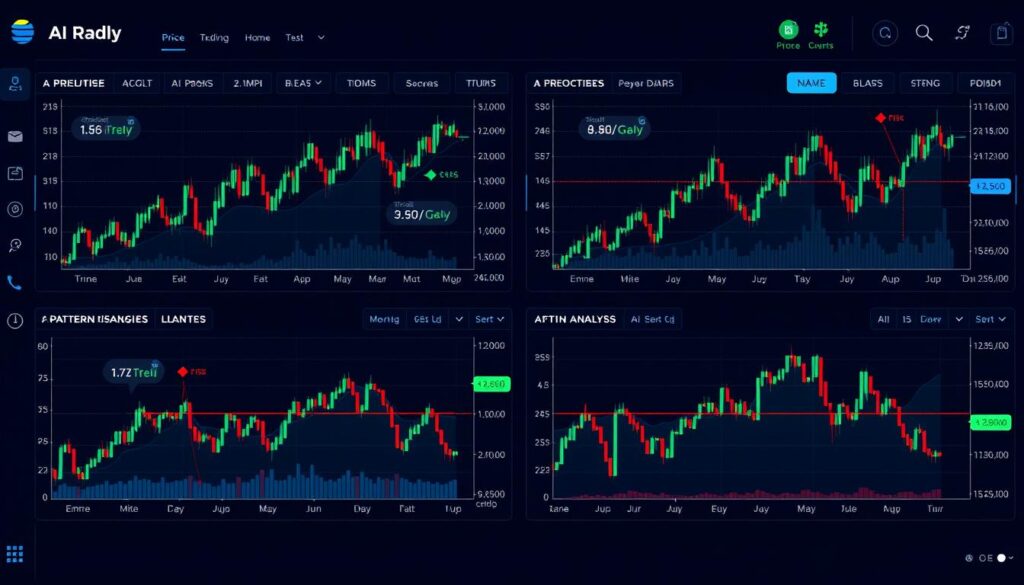
Zero-Knowledge Machine Learning (zkML)
One of the most innovative developments at the AI and crypto intersection is zero-knowledge machine learning (zkML), which combines machine learning with zero-knowledge proofs—a cryptographic method that allows one party to prove to another that a statement is true without revealing any additional information.
Verifiable AI Computations
zkML enables the verification of AI model outputs without requiring the verifier to rerun the entire computation. This is particularly valuable for blockchain applications, where computational resources are limited and expensive. Projects like EZKL and Giza are developing tools that allow developers to create machine learning models that produce verifiable proofs when executed.
This technology addresses a fundamental challenge in integrating AI with blockchain: running sophisticated AI models directly on-chain is prohibitively expensive due to the computational requirements. With zkML, the computation can happen off-chain, and only a compact proof of the result needs to be verified on-chain, significantly reducing costs while maintaining security.
Privacy-Preserving AI
zkML also enables privacy-preserving AI applications, where sensitive data can be analyzed without exposing the underlying information. For example, a medical AI model could process patient data and provide diagnostic suggestions without revealing the patient’s personal health information.
This capability is particularly valuable in financial applications, where users might want to benefit from AI-powered analysis of their transaction history or portfolio without exposing their financial details. By combining zero-knowledge proofs with machine learning, these applications can provide personalized insights while maintaining user privacy.
AI Agents with Crypto Wallets
Perhaps one of the most futuristic applications emerging at the AI and crypto intersection is the development of autonomous AI agents that can interact with blockchain systems through their own crypto wallets.
Autonomous Economic Agents
Projects like Fetch.ai are developing frameworks for autonomous agents that can perform tasks, negotiate with other agents, and execute transactions on behalf of users. These agents can be programmed to follow specific strategies or objectives, such as managing a DeFi portfolio or participating in prediction markets.
What makes this particularly powerful is that these agents can operate continuously, making decisions and executing transactions even when their human owners are offline. By combining AI decision-making capabilities with the permissionless nature of blockchain transactions, these systems enable new forms of automation that weren’t previously possible.
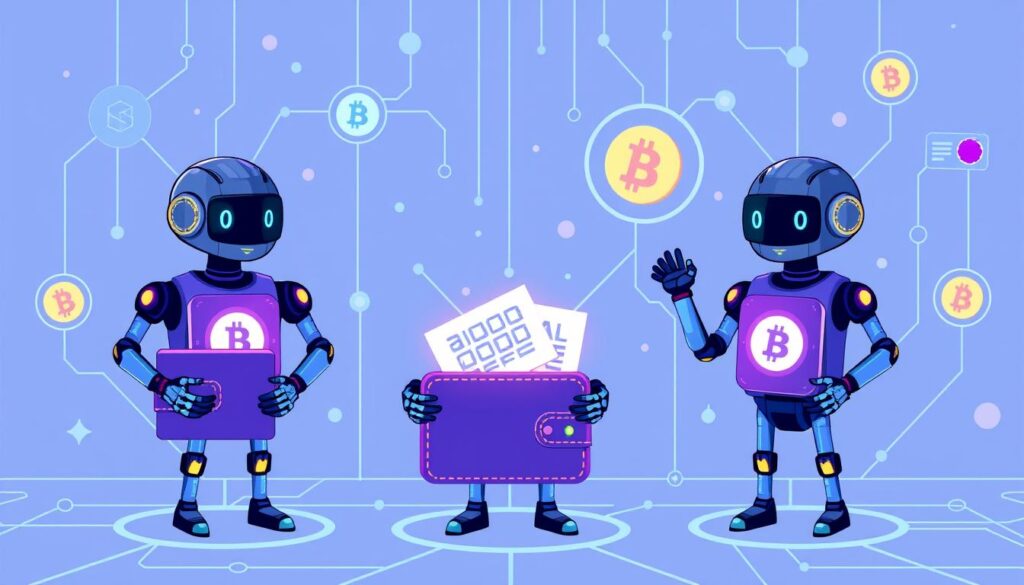
Case Studies: Successful AI and Crypto Integrations
To better understand the practical impact of the AI and crypto intersection, let’s examine some real-world case studies that demonstrate successful integrations of these technologies.
Ocean Protocol: Democratizing Access to AI Data
Ocean Protocol addresses one of the fundamental challenges in AI development: access to high-quality data. The project creates a decentralized marketplace where data can be shared and monetized while preserving privacy and control.
The Challenge
AI development requires vast amounts of data, but much of the world’s valuable data is siloed within corporations or inaccessible due to privacy concerns. This creates an uneven playing field where only large tech companies with access to massive datasets can develop competitive AI models.
The Solution
Ocean Protocol enables the creation of data marketplaces where individuals and organizations can share datasets while maintaining control over how their data is used. The platform uses blockchain to track data provenance and ensure that data providers are compensated fairly when their data is used to train AI models.
Users can create “data NFTs” that represent ownership of specific datasets, along with “data tokens” that grant access rights. This tokenization approach allows for flexible pricing models and ensures that data providers maintain control over their assets while making them available to the AI community.
The Results
Ocean Protocol has facilitated the creation of numerous data marketplaces focusing on different domains, from financial data to healthcare information. By providing a secure and transparent way to share and monetize data, the platform is helping to democratize access to the raw material needed for AI development.
The project demonstrates how blockchain can address a critical bottleneck in AI advancement by creating trust between data providers and consumers, enabling collaboration that wouldn’t be possible in traditional, centralized systems.
SingularityNET: Decentralized AI Marketplace
SingularityNET aims to create a decentralized marketplace for AI services, where developers can publish their AI tools and users can discover and utilize them through a blockchain-based platform.
The Challenge
The AI industry is increasingly dominated by a few large corporations that control both the infrastructure and the most advanced models. This centralization limits innovation and raises concerns about the future development of AI technology.
The Solution
SingularityNET provides a decentralized platform where AI developers can publish their services and earn tokens when users access them. The platform uses blockchain to handle payments, service discovery, and reputation management, creating a transparent ecosystem for AI services.
What makes SingularityNET particularly innovative is its focus on AI interoperability. The platform enables different AI services to communicate and collaborate, potentially leading to emergent intelligence that exceeds the capabilities of individual models.
The Results
SingularityNET has attracted a diverse community of AI developers who have published services ranging from natural language processing to image recognition and predictive analytics. The platform’s token-based economy creates incentives for developers to contribute their expertise while allowing users to access AI capabilities without being locked into a specific provider.
By creating a decentralized marketplace for AI services, SingularityNET is helping to ensure that the benefits of AI advancement are widely distributed rather than concentrated in the hands of a few large corporations.

Challenges and Limitations at the AI and Crypto Intersection
Despite the promising opportunities, the integration of AI and blockchain technologies faces several significant challenges that must be addressed for widespread adoption.
Technical Challenges
Current Progress
- Successful implementation of basic AI models for blockchain analytics
- Development of frameworks for verifiable AI computations
- Creation of decentralized marketplaces for AI resources
- Integration of AI capabilities in user interfaces for blockchain applications
Remaining Challenges
- Blockchain’s limited computational capacity for running sophisticated AI models
- High costs associated with on-chain verification of AI computations
- Scalability issues when processing large datasets required for AI training
- Latency problems that impact real-time AI applications
- Integration complexities between AI frameworks and blockchain protocols
Regulatory and Ethical Considerations
Opportunities
- Blockchain can provide transparency in AI decision-making processes
- Decentralized governance can ensure more democratic AI development
- Token incentives can align interests of various stakeholders
- Immutable records can enhance accountability for AI systems
Concerns
- Uncertain regulatory landscape for both AI and blockchain technologies
- Privacy implications of immutable data storage for AI training
- Potential for reinforcing biases through decentralized AI systems
- Security vulnerabilities at the intersection of these complex technologies
- Environmental impact of combining compute-intensive AI with energy-consuming blockchains
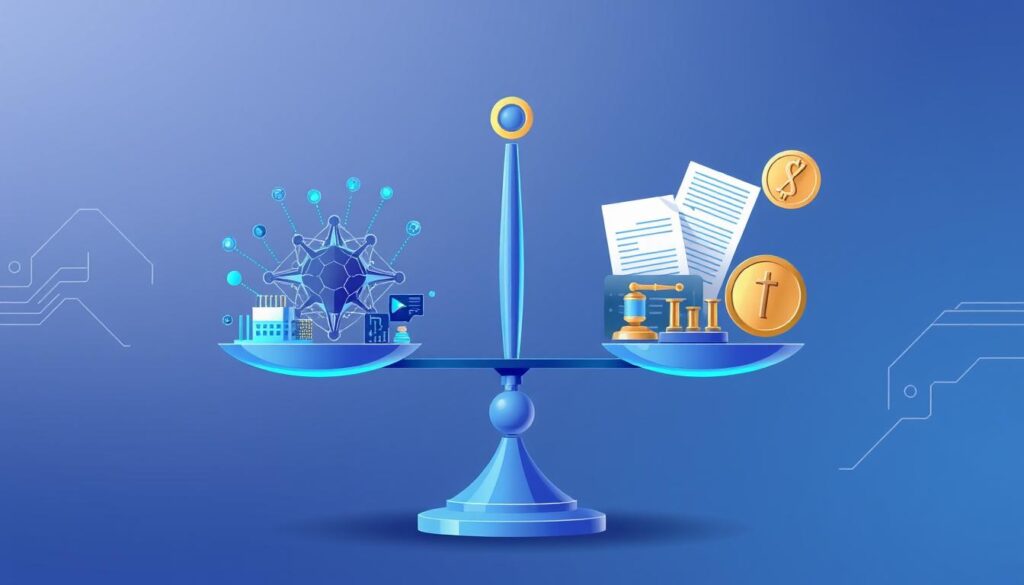
Frequently Asked Questions About the AI and Crypto Intersection
As these technologies continue to evolve and converge, many questions arise about their implications and applications. Here are answers to some of the most common questions.
Is AI a threat to crypto’s decentralization?
While there are legitimate concerns about AI centralization, the integration of AI with blockchain can actually enhance decentralization rather than threaten it. By creating decentralized marketplaces for AI resources and capabilities, blockchain technology can help prevent the concentration of AI power in the hands of a few large corporations.
The key is ensuring that AI development at this intersection follows the same principles of openness and decentralization that underpin blockchain technology. Projects like Bittensor and SingularityNET are specifically designed to democratize access to AI capabilities, creating ecosystems where many participants can contribute to and benefit from AI advancement.
How can beginners leverage AI in their crypto activities?
For beginners, there are several accessible ways to leverage AI in crypto:
- AI-powered research tools: Platforms like Glassnode and Santiment use AI to analyze on-chain data and provide insights that can inform investment decisions.
- Trading bots: Services like 3Commas and Pionex offer user-friendly interfaces for setting up automated trading strategies based on AI algorithms.
- Portfolio management: Applications like Shrimpy use AI to help users optimize their crypto portfolios and maintain desired asset allocations.
- News aggregation: AI-powered news platforms like LunarCrush analyze social media sentiment and news coverage to identify relevant information for crypto investors.
The key for beginners is to start with user-friendly tools that abstract away the technical complexity while still providing the benefits of AI analysis.
What skills are needed to work at the AI and crypto intersection?
Working at the intersection of AI and crypto requires a multidisciplinary skill set:
- Programming: Proficiency in languages like Python (for AI) and Solidity (for blockchain development)
- Machine Learning: Understanding of neural networks, reinforcement learning, and other AI techniques
- Blockchain Fundamentals: Knowledge of consensus mechanisms, smart contracts, and decentralized architectures
- Cryptography: Familiarity with cryptographic principles, especially zero-knowledge proofs for zkML applications
- Economics: Understanding of token economics and incentive design
For those looking to enter this field, focusing on one area initially (either AI or blockchain) and then gradually expanding into the other is often the most effective approach.
Will AI make blockchain obsolete?
No, AI is unlikely to make blockchain obsolete. In fact, these technologies serve different purposes and complement each other in important ways:
- Blockchain provides trust, transparency, and decentralization—qualities that AI systems often lack.
- AI offers intelligence, pattern recognition, and predictive capabilities that enhance blockchain applications.
- The combination of these technologies creates possibilities that neither could achieve alone.
Rather than one replacing the other, we’re likely to see increasing integration between AI and blockchain, with each technology enhancing the capabilities of the other.
How might quantum computing affect the AI and crypto intersection?
Quantum computing could significantly impact both AI and blockchain technologies:
- For AI: Quantum computing could dramatically accelerate machine learning algorithms, enabling more complex models and faster training times.
- For blockchain: Quantum computers might eventually break current cryptographic methods, requiring the development of quantum-resistant encryption.
- For their intersection: Quantum-enhanced AI could help develop more secure blockchain protocols, while blockchain might provide a framework for democratizing access to quantum computing resources for AI development.
While practical quantum computing at scale is still years away, projects at the AI and crypto intersection should consider quantum resilience in their long-term planning.
Download Our Free AI and Crypto Intersection Cheat Sheet
Get our comprehensive guide that summarizes key concepts, projects, and opportunities at the intersection of AI and blockchain technology. Perfect for beginners and experienced enthusiasts alike.
Future Trends at the AI and Crypto Intersection
As both AI and blockchain technologies continue to evolve rapidly, several emerging trends are likely to shape their intersection in the coming years.
AI DAOs (Decentralized Autonomous Organizations)
Traditional DAOs use smart contracts to coordinate decision-making among human participants. The next evolution may be AI-powered DAOs, where artificial intelligence plays a significant role in governance and operations.
Autonomous Governance
AI systems could analyze proposals, predict their impact, and even generate new proposals based on the organization’s goals and historical data. This could lead to more efficient decision-making while still allowing human oversight for critical decisions.
Dynamic Token Economics
AI algorithms could continuously optimize token distribution and incentive structures based on real-time data about participant behavior and market conditions. This could create more responsive and effective economic systems within DAOs.
Hybrid Intelligence Networks
Future organizations might combine human and artificial intelligence in novel ways, leveraging the strengths of each. Humans could provide creative direction and ethical oversight, while AI systems handle optimization, prediction, and routine decision-making.
Decentralized AI Training and Inference
As AI models continue to grow in size and complexity, the need for distributed approaches to training and running these models will increase.
Federated Learning on Blockchain
Federated learning—where models are trained across multiple devices without exchanging the underlying data—could be enhanced by blockchain’s ability to track contributions and distribute rewards. This could enable collaborative model development while preserving data privacy.
Tokenized Model Ownership
AI models themselves could be represented as tokens on a blockchain, with ownership distributed among contributors. This would allow for more transparent attribution and compensation for those who help develop valuable models.
Compute-to-Data Solutions
Rather than moving sensitive data to centralized servers for AI training, blockchain could facilitate secure “compute-to-data” approaches where algorithms are sent to where the data resides. This preserves privacy while enabling the development of more comprehensive AI models.
AI-Native Blockchain Protocols
Future blockchain protocols may be designed from the ground up with AI integration in mind, rather than adding AI capabilities to existing systems.
Adaptive Consensus Mechanisms
AI could dynamically adjust consensus parameters based on network conditions, optimizing for security, decentralization, and efficiency. This could lead to more resilient and performant blockchain networks.
Intelligent Smart Contracts
Beyond simple “if-then” logic, future smart contracts might incorporate machine learning models that can adapt to changing conditions and make more nuanced decisions based on complex data inputs.
Self-Evolving Protocols
Combining on-chain governance with AI could create protocols that automatically propose and implement improvements based on performance data and user behavior, leading to continuous optimization without requiring manual intervention.
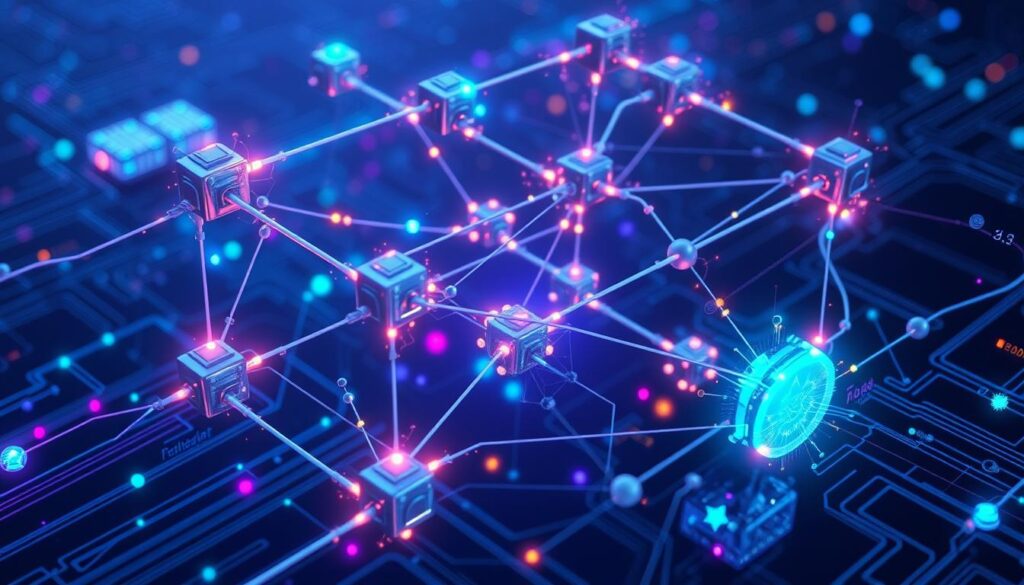
Ethical Considerations at the AI and Crypto Intersection
As with any powerful technology, the convergence of AI and blockchain raises important ethical questions that must be addressed to ensure responsible development and deployment.
Addressing Bias and Fairness
AI systems can inherit and amplify biases present in their training data. When these systems are deployed on blockchain platforms, these biases can become encoded in immutable, decentralized systems that are difficult to modify.
Key Challenge: Ensuring that AI systems deployed on blockchain platforms are fair and unbiased, particularly when they’re used for consequential decisions like credit scoring, resource allocation, or governance.
Potential approaches to addressing this challenge include:
- Developing transparent methods for auditing AI models before they’re deployed on blockchain systems
- Creating governance mechanisms that can update or replace biased models even within decentralized systems
- Ensuring diverse participation in the development and training of AI models used in blockchain applications
- Implementing on-chain metrics and monitoring for detecting and measuring bias in deployed systems
Environmental Impact
Both AI (particularly large model training) and certain blockchain consensus mechanisms (like Proof of Work) are energy-intensive. Their combination could exacerbate environmental concerns.
Important Consideration: The environmental footprint of systems at the AI and crypto intersection must be carefully evaluated and minimized, especially as these technologies scale.
Strategies for reducing environmental impact include:
- Prioritizing energy-efficient consensus mechanisms like Proof of Stake for blockchain networks that integrate with AI
- Developing more efficient AI training methods that require less computational resources
- Using renewable energy sources for both AI training and blockchain validation
- Implementing carbon offset programs specifically for projects at the AI and crypto intersection
Accessibility and Inclusion
One of the promises of the AI and crypto intersection is democratizing access to advanced technologies. However, without careful design, these systems could actually widen existing digital divides.
Critical Question: How can we ensure that the benefits of AI and blockchain integration are accessible to diverse populations globally, not just those with technical expertise or financial resources?
Approaches to promoting accessibility and inclusion include:
- Developing intuitive interfaces that don’t require technical knowledge of either AI or blockchain
- Creating educational resources that help newcomers understand and utilize these technologies
- Implementing progressive decentralization that allows for easier onboarding while maintaining the benefits of decentralization
- Ensuring that governance systems for these technologies include diverse voices and perspectives
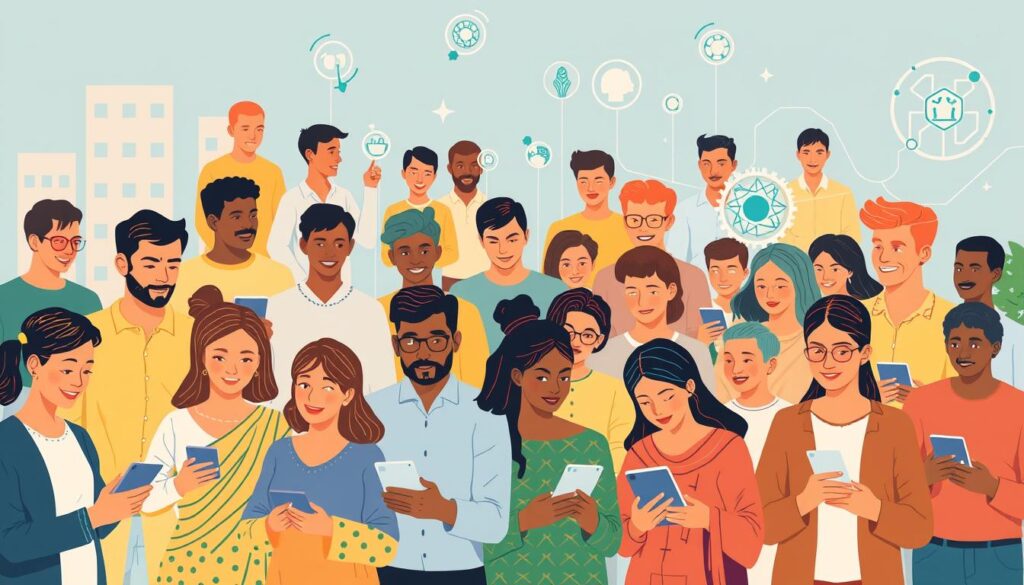
Conclusion: Navigating the Future of AI and Crypto
The intersection of AI and crypto represents one of the most exciting frontiers in technology today. By combining the intelligence and adaptability of artificial intelligence with the transparency and decentralization of blockchain, we’re witnessing the emergence of systems that could fundamentally transform how we interact with technology and with each other.
From decentralized AI compute networks that democratize access to computational resources, to AI agents that can autonomously interact with blockchain systems, to zero-knowledge machine learning that enables privacy-preserving AI applications—the possibilities at this intersection are vast and largely unexplored.
As these technologies continue to evolve and converge, they will likely face significant challenges, from technical limitations and regulatory uncertainties to ethical concerns about bias, environmental impact, and accessibility. Addressing these challenges will require collaboration across disciplines and a commitment to responsible innovation.
For those interested in this space—whether as developers, investors, or simply curious observers—the key is to stay informed about emerging trends while maintaining a critical perspective on both the opportunities and risks. By understanding the fundamental principles that drive both AI and blockchain technology, you’ll be better equipped to navigate this rapidly changing landscape and potentially contribute to shaping its future.
The most powerful technology is not AI or blockchain in isolation, but the synergies that emerge when they’re thoughtfully combined. The future belongs to those who can bridge these worlds and harness their collective potential.

Join the Conversation
What aspect of the AI and crypto intersection excites you most? Are you already using applications that combine these technologies? Share your thoughts, questions, and experiences in the comments below!






